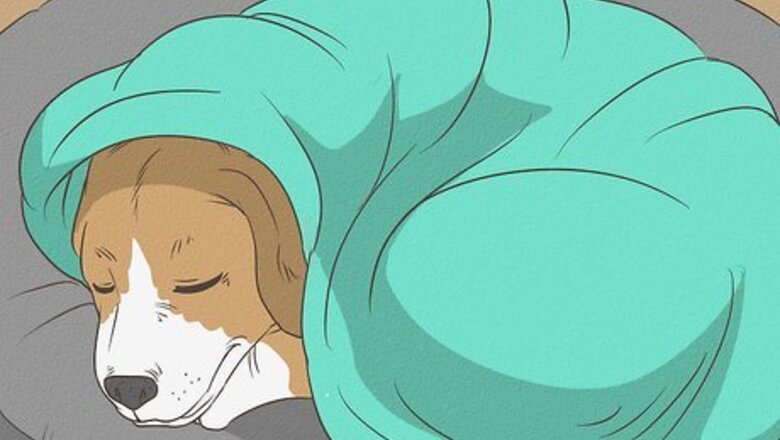
views
Caring for Your Dog at Home
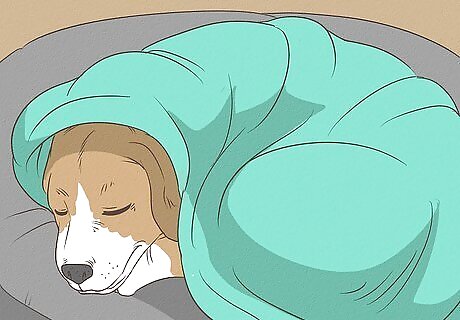
Keep your dog warm and dry. Keep your dog in a warm, dry environment as soon as you notice any potential symptoms. Turn up the thermostat by 2 or 3 degrees and provide plenty of warm blankets for your dog to curl up in. You can even use dog sweaters and socks to help your furry friend stay cozy while they fight their symptoms. Pet stores and online retailers offer heated dog beds, which use a low heat to help keep your dog consistently warm. Your dog should be warm, but you need to watch them to make sure they don’t overheat. If they start any heavy panting, remove some layers or turn down the temperature.
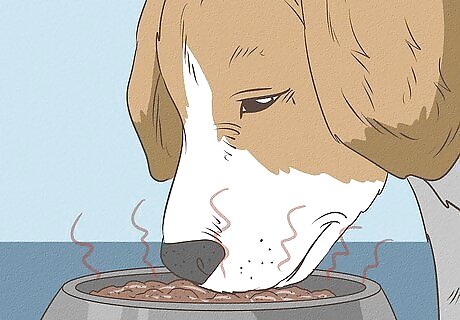
Feed them a warm, hearty diet. You should provide your dog with ample food while they are fighting their cold. Unless instructed otherwise by your vet, allow them to free-feed until their symptoms clear. You can even feed them shredded chicken or warm, low sodium chicken or beef broth to help supplement their diet while they recover. When your dog has a cold, it can dull their sense of smell. Help them find their food by warming it up in the microwave for ten seconds or so. This makes their meals more fragrant and easier to find. If the dog isn't eating well, then a trip to the vet is a good idea. However, you may find hand-feeding your dog entices it to eat.
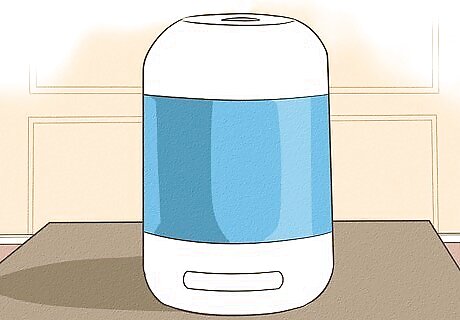
Increase the humidity in your home. Just like humans, dogs suffering from a cold breathe a bit easier with humid air. Set up a humidifier in the area where your dog typically sleeps, as well as one in the living room or any other area your dog spends their day. For many dogs, this means having one where they sleep, and maybe a second one in the living room or near their food and water. When possible, opt for a cool mist humidifier. Warm mist models could burn your pet if they aren’t monitored carefully.
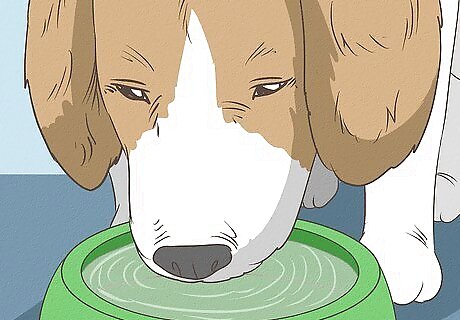
Watch your dog’s fluid intake. Hydration is especially important for dogs with colds. Make sure your dog has constant, unobstructed access to clean, fresh water. If your dog doesn’t drink for a period of several hours, add a splash of low-sodium chicken or beef broth to the water to encourage them to drink. Be sure to change your dog’s water at least once a day. Wash their bowl with dish soap and hot water every time you change their drinking water to make sure their germs don’t spread. If your dog goes a full day without drinking, call your vet immediately. Dehydration is a serious condition, and should be treated as soon as possible.

Give them plenty of rest. Even if your dog is normally active and playful, they need ample rest when fighting a cold. Dogs need 12 to 14 hours of sleep a day, and they may need even more than that when they are sick. Let your dog rest until their symptoms subside. Avoid taking them for long walks or playing exhausting games with them. EXPERT TIP Colleen Demling-Riley, CPDT-KA, CBCC-KA, CDBC Colleen Demling-Riley, CPDT-KA, CBCC-KA, CDBC Canine Behavior Consultant Colleen Demling-Riley (CPDT-KA, CBCC-KA, CDBC) is a Canine Behavior Consultant and the Founder of Pawtopia Dog Training. With more than 20 years of experience, she specializes in creating and customizing dog management programs for dog owners. She is a Certified Pet Dog Trainer-Knowledge Assessed, Certified Behavior Consultant Canine-Knowledge Assessed, Certified Dog Behavior Consultant, and American Kennel Club Canine Good Citizen Evaluator. Colleen is a member of the International Association of Canine Professionals and has been a featured expert in national media including the New York Times, Woman’s Day, Readers Digest, Cosmopolitan, and Yahoo.com. Colleen Demling-Riley, CPDT-KA, CBCC-KA, CDBC Colleen Demling-Riley, CPDT-KA, CBCC-KA, CDBC Canine Behavior Consultant When your dog is having health issues, give them extra care and attention. Make your dog as comfortable as possible. Put them on a soft bed or blankets in a quiet spot where they can rest peacefully, like a crate in a quiet corner of the family room. Give them space and avoid forcing them to walk or play. These comforting gestures can make a big difference in how your dog feels while they're sick or uncomfortable.
Recognizing a Cold
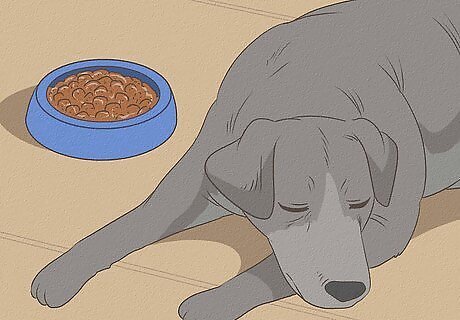
Look for symptoms similar to those seen in humans. Different viruses cause a cold in dogs and humans, but their symptoms are similar. The most common signs your dog has a cold will include red eyes, lethargy, coughing, sneezing, and vomiting. Other symptoms may include: Warm ears A warm, dry nose Shivering Loss of appetite
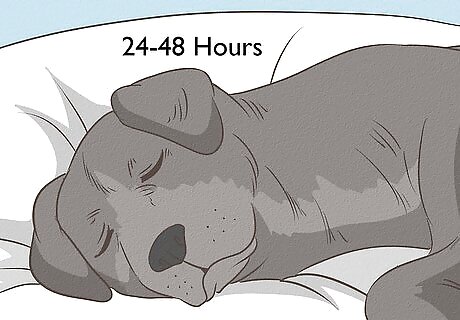
Monitor the severity of the symptoms. In most cases, a dog’s cold will present noticeable but not severe symptoms. However, the cold symptoms are also seen with other, more critical conditions. If your dog's symptoms get worse over a period of 24 to 48 hours, if there is a rattling in their chest, or if they are visibly uncomfortable, they need immediate vet attention. Other canine diseases that may have similar symptoms to a cold include parainfluenza, kennel cough, distemper, and different types of infections.
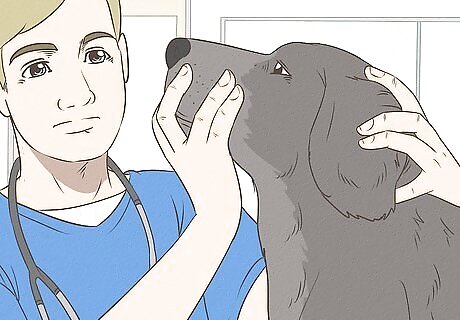
Seek vet care for severe or ongoing symptoms. If your dog experiences symptoms lasting more than a few days, or if their condition seems to be getting progressively worse, call your vet immediately. Your vet will be able to determine what condition is responsible for your dog’s symptoms, and they can help you develop a treatment and care plan. Most colds don’t require medication. If your vet prescribes medication for another condition or to help manage severe cold symptoms, administer it in accordance with their directions. If your dog is running a fever, if they stop drinking water, or if they are in such pain that they cannot move, bring them to an emergency animal clinic right away.
Preventing Future Colds
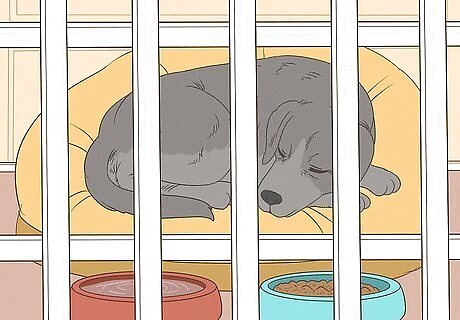
Quarantine sick dogs. If you have multiple dogs and only one of them is displaying cold-like symptoms, separate your other dogs. Provide your sick dog with a quiet, isolated resting place, and keep your other dogs separate until the symptoms subside. Make sure your sick dog has their own food and water dishes. Do not let them share food and water with your healthy pets until symptoms have completely subsided.
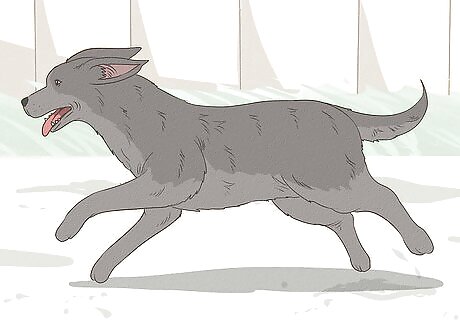
Keep them healthy and active. A dog’s immune system is in better shape when they are healthy. Keep your dog in its best shape by making sure they get a healthy, balanced diet appropriate for their age and size, along with exercise and play time every day. It is also important to take your dog for their semi-annual check-up with their vet to make sure they are healthy and up to date with all their shots.
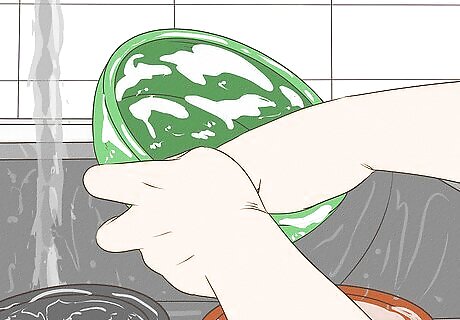
Clean your dog's dishes and toys at least once a week. Clean your dog’s hard plastic toys and their food and water dishes with dish soap and warm water. Clean softer rope and fabric toys in the washing machine, and allow them to air dry. If your dog’s toys are shared, you may want to clean them more frequently.
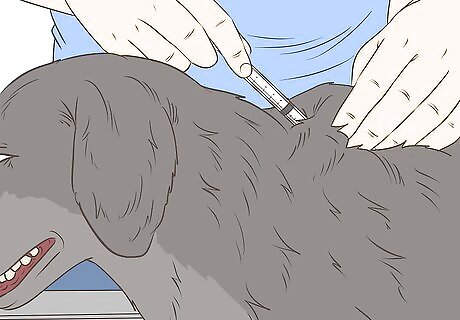
Stay up-to-date on your dog’s vaccinations. While there is currently no vaccination against the canine cold, vaccines will help prevent against other, more serious illnesses that have cold-like symptoms. Talk to your vet about the 5-in-1 vaccine, which protects against distemper, hepatitis, leptospirosis, parvovirus, and parainfluenza. Your dog’s vet should have their vaccination records and can let you know when your dog needs a new vaccine.
















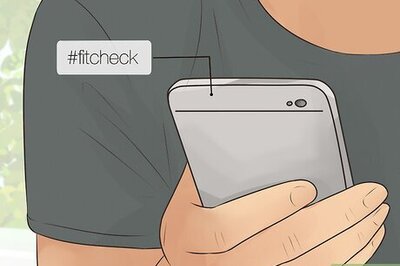
Comments
0 comment